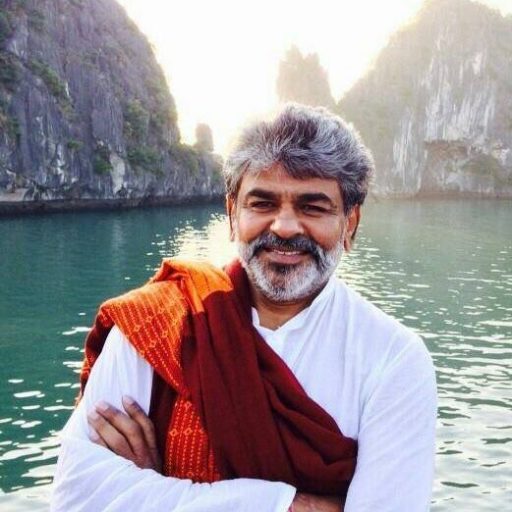
You would have all heard the story of “The elephant and the blind men” at some point in your life. Even I didn’t know that this story originated in India, from where it spread far and wide. The Buddhist text Udana written during the lifetime of Gautam Buddha c.500 BCE, contains one of the earliest recorded versions of this story. However, this tale they say is much older than that and has transgressed religions. It can be found in Jain, Hindu and Buddhist texts. The story also appears in the 2nd millennium Sufi and Bahá’í lore. It became well known in Europe with the 19th century American poet John Godfrey Saxe creating his own version as a poem. The story has been published in many books for adults and children, and interpreted in a variety of ways.
As the story goes, a group of blind men come across an elephant. They conceptualize what the elephant looks like by touching it. Each blind man feels a different part of the elephant’s body. They then describe the elephant on their limited experience and come to blows, each holding onto their reality.
This story brilliantly depicts the concept of Anekāntavād, one of the pillars of Jainism. Simply put it means that reality is complex and all of us perceive it in a different way. Since none of these perceptions are representative of the whole, they are incomplete and hence never portray the complete truth. Some scholars may even argue that in the modern day “Anekāntavād” can be interpreted as religious tolerance, open-mindedness and pluralism.
And why not? Especially today in the 21st Century. We have reached the zenith of modern advancements. Recently Microsoft released their Hologram technology, where you can project yourself as a hologram anywhere in the world and speak in any language in your own voice. Jeff Bezos ‘Blue Origin’ and Elon Musks ‘SpaceX’ are gearing to make Space easily accessible to humans. At a social level we’re surviving Corona thanks to IT. Yet the entire world including India is at blows on the matter of religion, race, caste and creed. The diametrically opposite beliefs across religions are tremendous.
In Sikhism, amongst the five items that Guru Gobind Singh commanded Khalsa Sikhs to wear, keeping long hair is a must. While on the other hand for Hindus donating their hair at Trupati is a must.

Muslims are not allowed to consume alcohol while Christians sip wine in their holy place of worship.

Hindus believe the cow is holy, while for the rest of the world it’s staple food.

Muslims are not permitted to lend money while for Marwari’s it is their main occupation.

Jains believe so deeply in non violence that they even cover their mouths to avoid killing microscopic beings. All the other religions have no such diktat, hence feel little remorse in killing animals and plants alike, for their use.

Sikhs must wear a turban while traditionally all Hindus were required to wear a śikhā, today mainly sported by Brahmins and temple priests. Shikha is a lock of hair left on top or the back of the shaven head.

Similarly a moustache in many cultures is considered to be a mark of masculinity while in Islam it is not allowed.

For Hindus, moksha can be attained by a simple dip in the Ganges while for the Jains it is hard ritualistic fasting. The only way to get rid of karma and attain salvation.

For every other religion there is a creator while the Jains don’t believe in God as the creator.

Sikhs are supposed to sport a beard while Hindus should be clean shaven.

One religion believes in idol worship and the other one forbids likening God to any material form.

Many wives in Islam are allowed by law while in other religions it’s tantamount to going against the law.

In the holy month of Ramzan you’re allowed to eat only between sunset and sunrise the following day. On the other hand for Jains food and water may be consumed only between sunrise and sunset.

Some religions insist on their women being fully covered and others don’t have such requirements.

These are just a few top of the mind antipodal differences that pop up when we compare religions across the world. If one were to do a serious study the above would run into pages. The elephant parable which is quite self explanatory in its message, that we indeed view reality based on our perceptions which are clouded by attitudes, beliefs, upbringing, experiences and personality. It is thus only one sided and not the whole. The whole will be the collective perceptions of everyone added together.
I go back to John Godfrey Saxe’s poem. In the final verse he explains that the elephant is a metaphor for God, and the various blind men represent religions that disagree on something no one has fully experienced. Is Anekāntavād the answer to world peace? A bridge to understand each other? I leave you with the last verse which beautifully captures the moral of Anekāntavād.
So, oft in theologic wars
The disputants, I ween,
Rail on in utter ignorance
Of what each other mean,
And prate about an Elephant
Not one of them has seen!
Opinions in this piece belong to the author: Ramesh Kumar Shah
Ramesh Kumar Shah is the founder of the RK Group, founder of RK Trust (rktrust.in) and co-founder of Harvard Business School Angels of India. Apart from being a businessman, he is keenly involved in making as much of a difference in people’s lives as he can, most recently through the Let’s Mask India initiative, that provides a free mask to all the residents of Bangalore.

Leave a comment